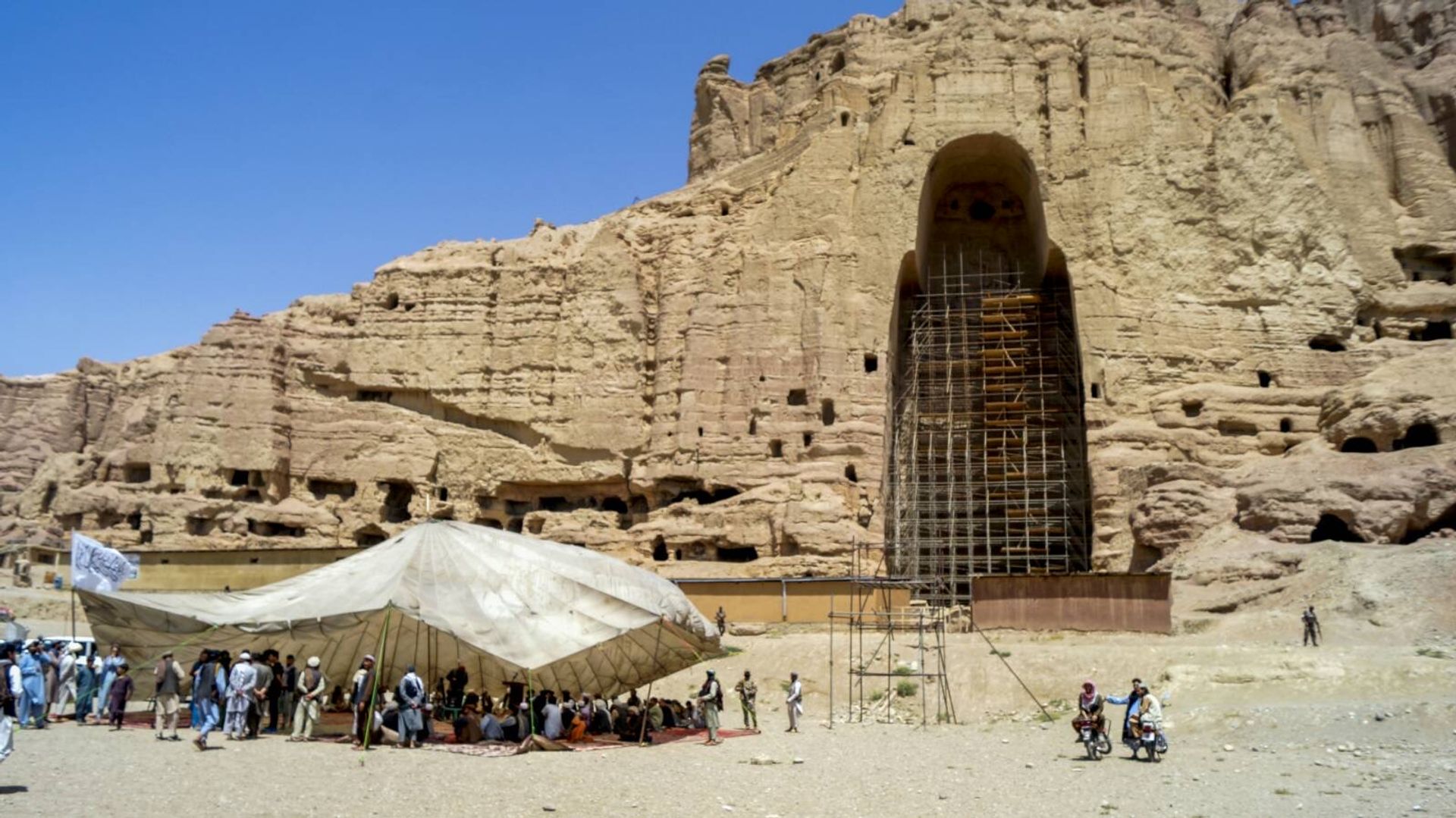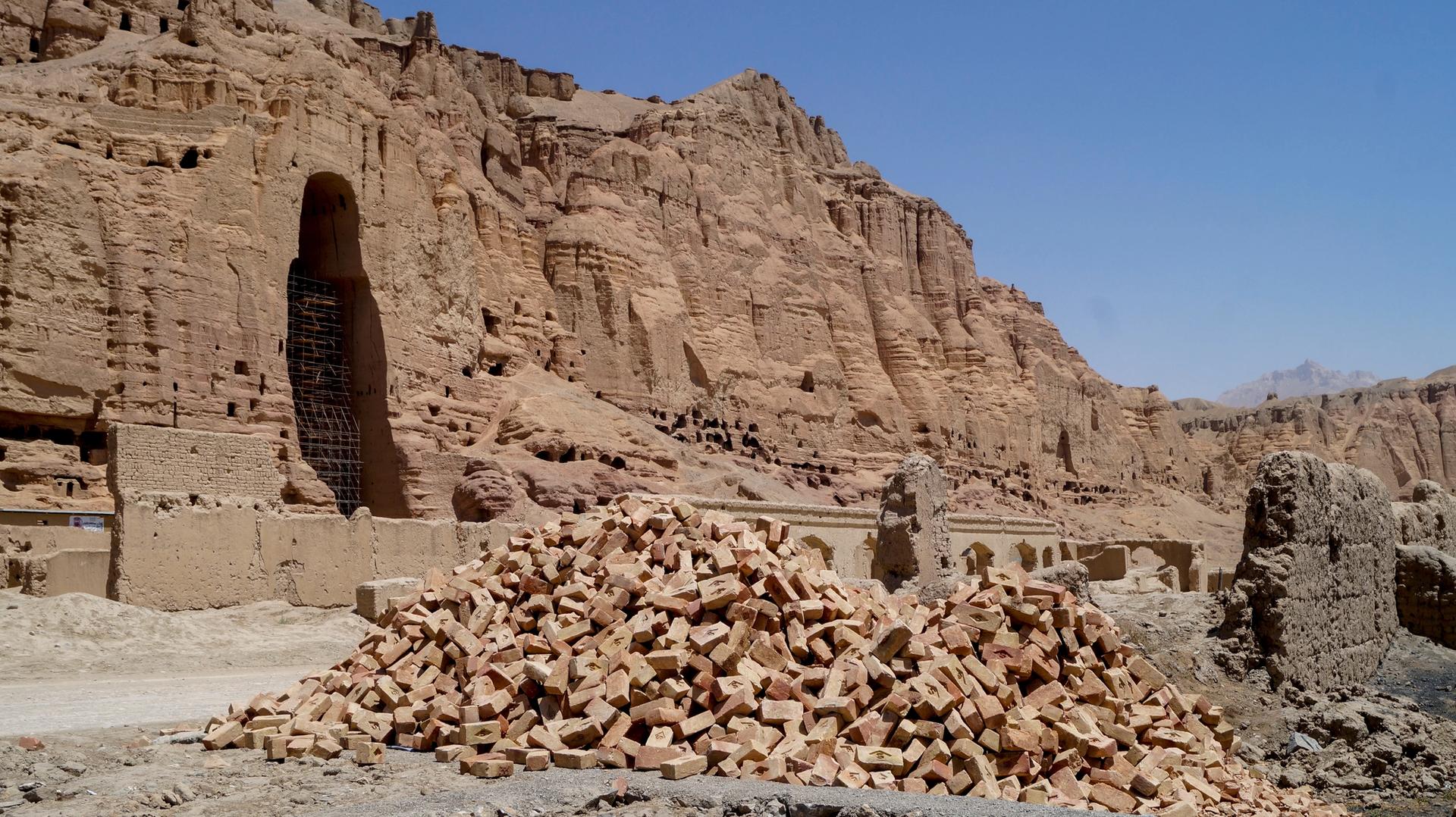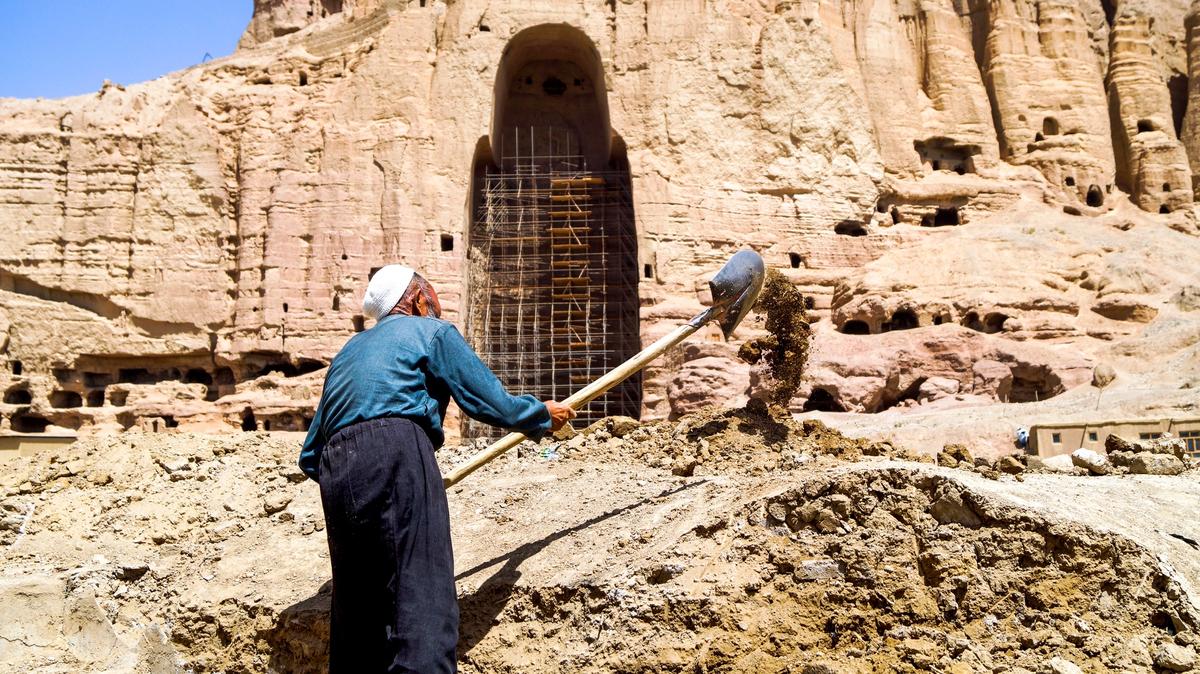In 1960, the last king of Afghanistan, Mohammed Zahir Shah, had a vision to turn the central Bamiyan Valley into a tourist destination. His plans included building a hotel in front of the two giant sixth- and seventh-century Buddha statues carved into the cliff face. But he was dissuaded after consulting the Italian conservation architect Andrea Bruno, who would later become an expert for Unesco in Afghanistan, and the project was abandoned.
More than 60 years later, plans to develop the site for tourism have resurfaced under the Taliban. In a ceremony held in the Bamiyan Valley last month, local Taliban officials announced the reconstruction of a historic bazaar that once sat in close proximity to the Buddha cliff. However, there is uncertainty over those plans after the scheme that aims to revive the area’s crippled economy with shops, restaurants and hotels attracting tourists to the valley was ordered to be paused by the Taliban the day after it began.
The original bazaar, built in the late 19th or early 20th century, was destroyed over the last four decades by wars. The ruins are visible around 70m away from the carved niche in the cliff that housed the larger, 55m-high Buddha before the towering statues were blown up by the Taliban in 2001.
The Bamiyan Valley’s cultural landscape and archaeological remains, which includes the location of the old bazaar, were placed on Unesco’s World Heritage in Danger list in 2003. The site is a protected zone with strict rules that prohibit construction. But this time, there is no one to deter development. One year after the withdrawal of US-led forces from Afghanistan, there is little technical expertise or central authority left in the country to prevent damage to protected heritage sites.
According to a Taliban press statement, the bazaar’s reconstruction will be carried out in coordination with the Ministry of Information and Culture and under the supervision of Unesco. But the UN agency was quick to deny any knowledge of the project and warned of its dangers. “Unesco has neither requested nor been associated with this project, which is located in the heart of the archaeological zone and could be problematic for the proper conservation of the world heritage site,” it says in a statement.
The head of Bamiyan’s Ministry of Information and Culture, Mawlawi Saifurrahman Mohammadi, who was present at the project inauguration, tells The Art Newspaper: “We fully support the preservation of Bamiyan’s cultural and heritage matters and we are making sure that they are protected.”

The inauguration ceremony of the historic bazaar reconstruction project was held in the Bamiyan Valley. © The Art Newspaper
Mohammadi says the local authority has held multiple meetings with private individuals who own land in the valley, and has submitted a report on the reconstruction plans to the Afghan Ministry of Information and Culture in Kabul for approval. “We are hopeful that whatever is decided will be in the people’s and the country’s interest. We are waiting for guidance from our elders [senior Taliban officials in Kabul] and will follow whatever they decide,” he says.
For more than a decade, local landowners have been frustrated in their efforts to develop the heritage site due to its listed status. The previous government introduced a plan to purchase deeds that fell on protected land, but the process was not completed, and the Taliban has now inherited the development row.
According to the former mayor of Bamiyan, Aman Mohammad Aman, who now resides outside of Afghanistan, people have sought for years to develop the listed lands and some have even exploited the lack of heritage expertise in the local and central governments to obtain the relevant permits. He says that local authorities held numerous workshops and events to raise public awareness of the importance of safeguarding heritage sites.
In 2007, Afghan authorities drew up a cultural master plan for Bamiyan with Unesco’s guidance, detailing the listed lands and prohibiting activities including construction and trade on them. Aman suggests some senior Taliban officials may have approved the bazaar’s reconstruction “due to lack of knowledge” of the master plan, but he says “the people who claim to be the landowners of these sites are clearly aware” of the restrictions. Any development on the site requires a submission to Unesco for approval, which Aman fears is now impossible since so many Afghan heritage specialists have fled the country following the US’s withdrawal.
He also worries that there is no one left to implement Bamiyan’s strategic master plan, developed in 2018 by the University of Florence, the Afghan Ministry of Urban Development and Housing, Bamiyan Governorate, Bamiyan Municipality and Bamiyan University. The document is intended to guide urban development in the area in a way that fosters economic growth while safeguarding heritage sites.

Bricks and stones were transported to the site of the old bazaar at the inauguration ceremony that announced plans to rebuild an old bazaar in Bamiyan Valley and develop it as a tourist destination. The historic bazaar’s leftover ruins can be seen in the background. © The Art Newspaper
“The strategic master plan was very interested in supporting the possibilities for Bamiyan to become an interesting tourist destination—they need it because they need economic development,” says Mirella Loda, a geography professor at the University of Florence who coordinated the project. Some of the solutions proposed by the plan included a hotel zone that would offer clear views of the Bamiyan Valley but would be located far enough away to prevent damage, and a bypass road to divert the traffic away while connecting up important sites.
“My impression is that we Western people, and Unesco as the representative of our views, do not take this point [the need to balance the protection of cultural heritage with the need for economic development] enough into consideration,” Loda says.
There were already proposals to rebuild the old bazaar when the strategic master plan was being drawn up, she says, but the team did not support the idea due to the risk of damaging the heritage site. “It is not a good idea to bring this tourist infrastructure so near to the Buddha [niche]. If you build a new infrastructure there, where the archaeological path is now, you create a point that needs to be reached by people, by commodities, and this will be an urbanised area,” Loda says. “This is in contradiction with the necessity to safeguard the agricultural soil because this is a crucial part of the cultural landscape.”
Unfortunately the strategic master plan is currently only available in English. Efforts to translate the document into Dari came to an abrupt halt when the Taliban took over the country.
The Taliban now have the daunting task of dealing with the disgruntled locals who own land on heritage sites without access to the assistance of experts.
Although the US and its Western allies negotiated with the group for years before its takeover on 15 August 2021—while excluding the former Afghan government from the talks—they have refused to officially recognise the Taliban government. Afghanistan’s access to funds abroad is blocked, and it is experiencing one of the worst humanitarian crises in the world. The Taliban’s lack of international recognition means that organisations affiliated with Western governments are struggling to establish a relationship with the new Afghan government.
“The short-term solution is for Unesco to intervene and prevent these [development] activities on protected sites,” Aman argues. “You can see all the aid from the UN is being distributed through non-government entities; [Unesco] can do the same. They can work with organisations that are not connected to the [Taliban] government and directly reach the people to stop further damage to Bamiyan’s heritage sites.”
Loda says she is working tirelessly to find competent people in Afghanistan who could support the implementation of the strategic master plan for Bamiyan.
It remains to be seen whether the Taliban will succeed where the previous government failed in purchasing the listed lands from the locals. But Mohammadi says all options are on the table and they will do what they can to protect Bamiyan’s heritage sites.
“When the land is owned by individuals and the government has plans for that land, it is essential that their consent is obtained. [People] have to be allowed to work, or provided with other land, or their lands should be evaluated and purchased. Whatever the case, the consent of the people has to be obtained,” he says. “We hope to find a good solution that takes into account the people’s interest, the interest of the government and the interests of Unesco.”


